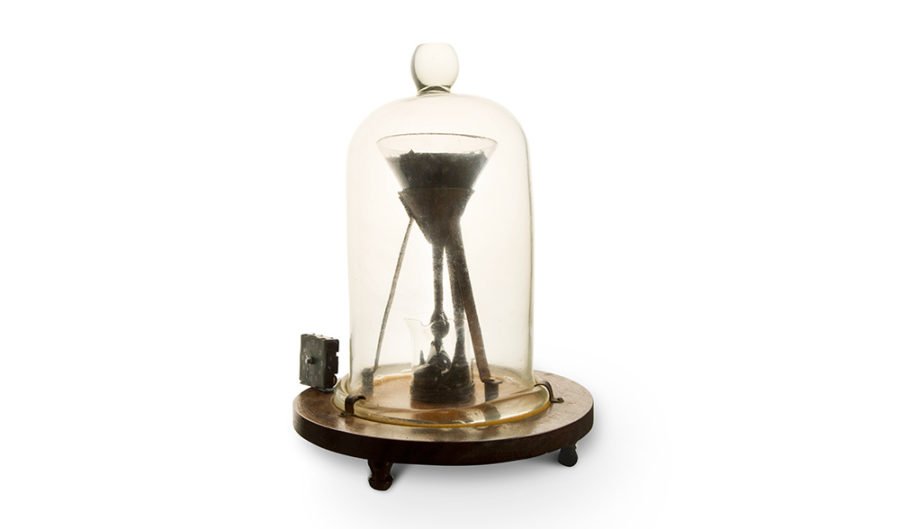World’s longest experiment drops 13-year blob

THE WORLD’S LONGEST-RUNNING lab experiment, an 86-year-old block of dripping pitch tar at the University of Queensland, has finally dropped its ninth blob after a 13-year world-wide webcam vigil by fans of physics and philosophy.
Hundreds of thousands have tuned in over the years to watch not much at all happening to the pitch, and thousands tuned in to watch the latest historic moment.
The drop touched down sometime between 9th and 14th of April, but because its fastest speed (2mm/week) is slower than glacial pace, it will take researches time to analyse the exact moment of touchdown.
The only sadness that it happened only eight short months after the experiment’s custodian of more than 50 years, Professor John Mainstone, passed away.
Although John championed the quirky experiment he never saw it drop, a series of unfortunate events preventing anyone from witnessing that moment until now.
Pitch tar: the longest lab experiment in the world
The block of pitch tar, dripping at a rate of one drop every nine years or so, sits with a camera trained on it in the foyer of the Parnell Building at the University of Queensland (UQ).
Put together in 1927 by UQ’s first head of physics, Thomas Parnell, it was designed to show his students that a substance could be both brittle solid and a viscous like a liquid.
Some, have described the slow moving experiment as being less interesting than watching paint dry. However, across the internet are many fans, who emailed former custodian, Professor John Mainstone who passed away after a stroke last year, with requests, poems, musings and warnings if something goes awry with the live feed.
“Oh yes, certainly – if the lights go out in the display, they are onto me in about 15 minutes,” he told Australian Geographic in 2013.
According to Guinness World Records this cult object is the world’s longest-running laboratory experiment. Capturing imaginations the world over it has been replicated and sold as art in England, and used as a philosophical prop in the USA’s famous cultural digest, The New Yorker. There’s even evidence that the tar itself originated from a rowing boat owned by the son of early 20th-century artist Norman Lindsay.
Pitch drop never seen until now
Blobs of tar fall off about once every nine years but, improbably, no-one has ever seen one drop. With webcams came 24-hour surveillance, but in 2000 a data malfunction meant the footage of that tenth-of-a-second drop was lost. Physicists have suggested that the next chance to see it may be sometime this year.
Parnell died in 1948, 13 years before John set foot in the university. Having saved the experiment from the recesses of a cupboard, John, a physicist with an interest in history, was chuffed to accept on Parnell’s behalf an Ig Nobel Prize – the tongue-in-cheek awards for seemingly barmy research projects that “first make people laugh, and then make them think”.
He went to Harvard University in 2005 to receive a joint award for himself and Parnell from physics Nobel Laureate Robert Wilson. It was the Ig’s first posthumous award. “[Parnell’s successor] refused to let me put the thing on public display on the grounds that nobody would be the slightest bit interested,” John said. “He certainly was wrong on that one.”
Pitch drops
1927 Pitch put into funnel
1938 first drop
1947 second drop
1954 third drop
1962 fourth drop
1970 fifth drop
1979 sixth drop
1988 seventh drop
2000 eighth drop
2013 ninth drop

